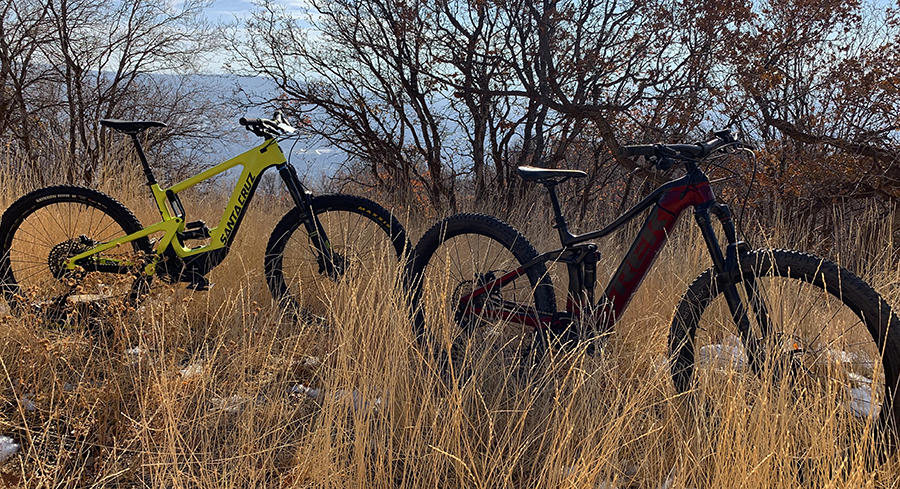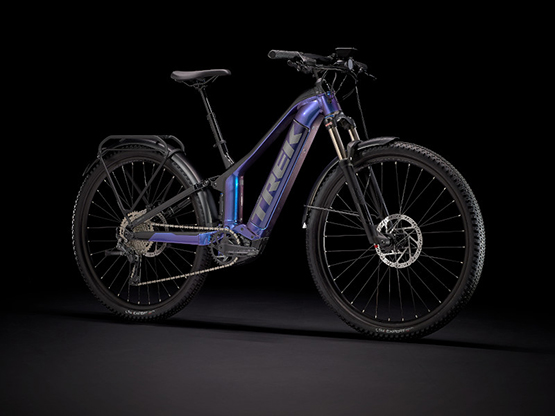As the popularity of mountain biking continues to expand as an outdoor activity so has the number of people getting into the sport as a pastime. Part of this expansion can be credited to the widespread accessibility of public trails and decreasing price points as mountain bike technology further develops. Particularly in a pandemic year, folks that usually aren’t outdoor enthusiasts are searching for ways to get out of the house and enjoy some fresh air. Electric mountain bikes, or e-MTB’s are quickly becoming a way for many people to fill this void. They're exactly what you’d think they are - mountain bikes with a motor that provides pedaling assistance. Much like their hybrid counterparts that I covered in a previous blog, e-MTB’s don’t have a throttle and they will only provide assistance up to 20 mph (as opposed to 28 on a class 3 e-bike). Nowadays, they have become so popular that virtually every mountain bike manufacturer offers an electric model. At Guthrie’s we carry e-MTB’s that have a mid-drive motor system on models offered by Santa Cruz and Trek. This article will provide a breakdown of some of these models as well as provide general information you should know when deciding whether or not to purchase an electric mountain bike.
Bosch Performance Line Cx vs. Shimano Steps E8000
As with any electric-assist bike, a large factor that needs to be considered in a buying decision is the electric aspect itself, the motor. The first thing to consider is placement of the motor and battery on the bike. Motors that are mid-drive, or placed in the middle of the bike near the bottom bracket, seem to fare best for offroad use. Compared to rear-hub drive motors, mid-drive systems are more powerful and place their weight centrally on the bike to provide better weight distribution and keep the feel of the e-MTB akin to a traditional mountain bike. The two most notable motors that come stock on many electric mountain bikes are the Bosch Performance Line CX and the Shimano Steps E8000. Both of these models are renowned for their top-of-the-line performance and long term reliability. They also happen to be the motors that come stock on the most popular e-MTB’s we sell, the Trek Rail (Bosch) and Santa Cruz Heckler (Shimano). Below is a comparison of the two motors:

Although comparing motors side by side is helpful, it should be taken with a grain of salt. A much more determinant factor of how a bike performs is the overall ride quality, which will vary by each rider. One thing I will say is that it is that purchasing an e-MTB with either of these systems is worth it just for the serviceability. Most shops will have mechanics that know how to work on them and have software available when the system needs to be updated.
Range
The range of an electric mountain bike is usually seen as the most important factor to consider before purchasing. This can play a large part in helping you determine how far and how long to ride. However just as with any other electric bike, it is a very tricky question to answer due to the plethora of variable circumstances that go into riding a mountain bike. This would include things like rider weight, terrain, assist level, and even tire pressure. On the models we sell, Trek’s stated range for both the Rail and Powerfly FS is 15-40 miles while Santa Cruz suggests using the range function on the Heckler’s display unit for the best estimate (but I would guess it’s about 10-35 miles). This is certainly helpful to know, but range is only a single factor that should be used in a holistic approach to determine which electric mountain bike to buy.
Where can I ride?
This has become a topic of much debate and ambiguity in recent years. Much of the rhetoric against e-MTB’s comes from mountain bike “purists” who claim that e-bikes are an abomination to the sport. The fact of the matter is that electric mountain bikes provide more people with access to mountain biking and allow you to ride further and faster than ever before. From the perspective of a bike shop employee like myself, this is a boon to the industry as a whole, whether you like it or not. Despite this there currently are restrictions as to where you’ll be able to ride an electric mountain bike, most of which come on a localized basis. The Bureau of Land Management and U.S. Forest Service regard all e-Bikes as motorized vehicles, meaning they are not allowed. This is obviously a highly debated topic, as many trails are located on sections of land that are governed by these bodies. Several trail systems have begun to use signage regarding e-MTB use.
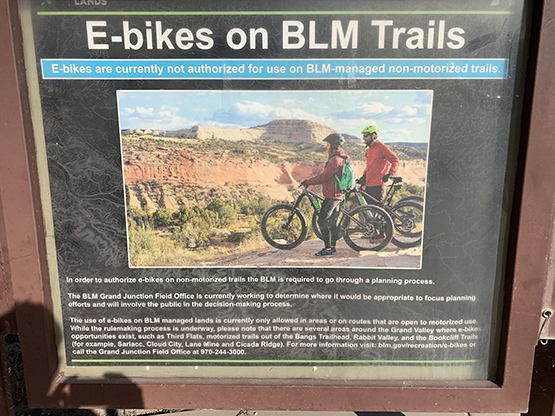
Kokopelli Trails in Fruita
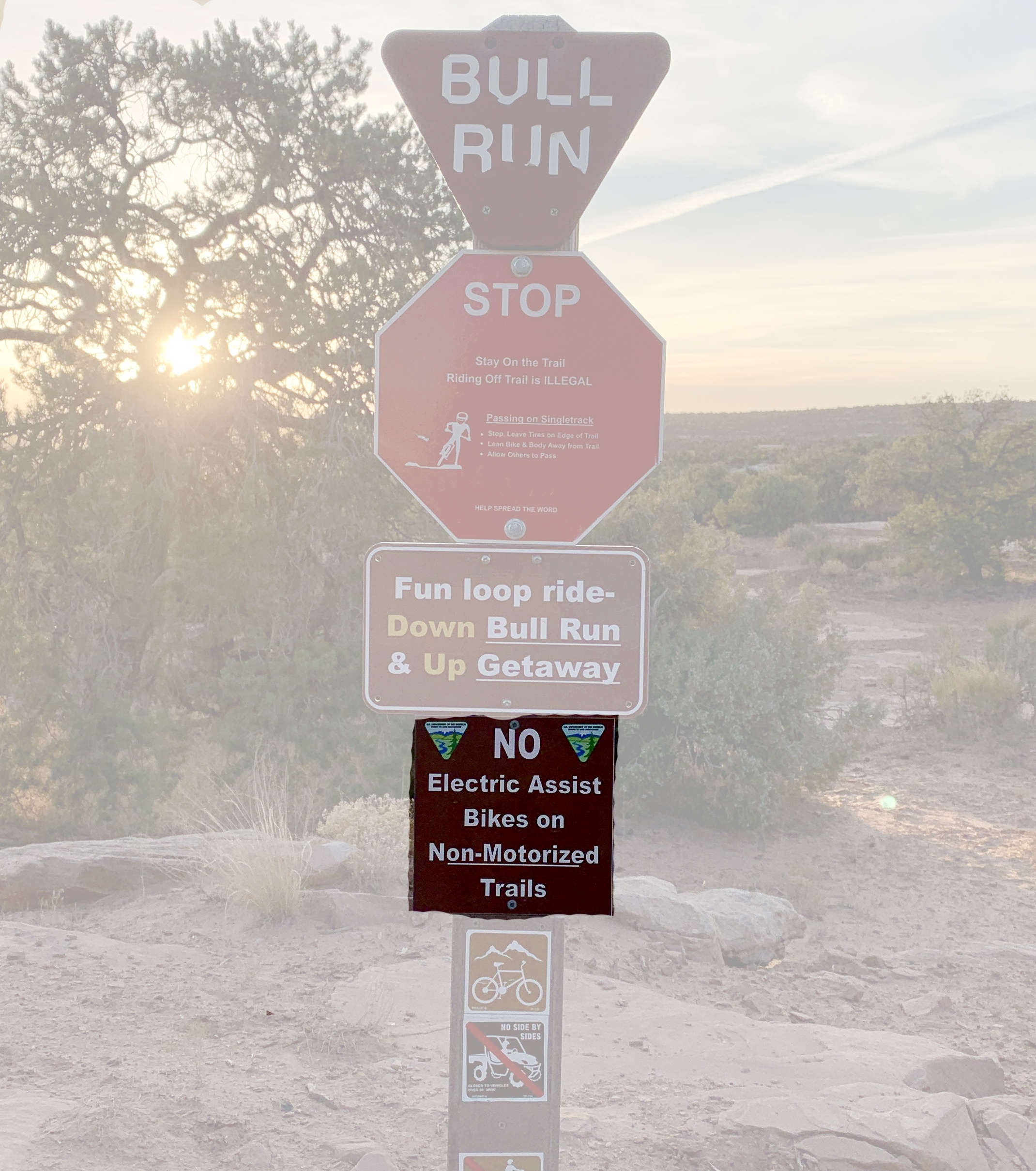
Magnificent 7 Trails Moab
In Utah there is currently not any statewide policy on electric mountain bike access, so it varies significantly depending on where you are. A good general rule is that if a trail is open to both motorized and non-motorized vehicles then it is ok to ride an e-bike there. Most trails around Salt Lake City and Park City are off limits to e-MTB’s, with the exception of Corner Canyon in Draper. For a detailed map of where you can ride your electric mountain bike, click here.
The Bikes
At Guthrie’s we offer a variety of electric mountain bikes in different price ranges. Here are a few of our favorite models:
Trek Powerfly FS 4
New for 2021, I would consider this more of an adventure and camp bike than I would a full-suspension trail bike. It has 120mm of travel up front and 100mm rear which puts it in a class for cross country riding, not burly all-mountain senders. You’ll also get a durable aluminum frame accompanied by a Bosch Performance CX 250W motor and a Shimano 10-speed drivetrain; all super durable and long-lasting parts. At $4600, the Powerfly FS 4 sits right in the middle of the price range for e-MTB’s but delivers big time on value. This bike is perfect for someone who wants to do some light trail riding but needs a bit of a boost to get up hills or to just wants to ride longer.
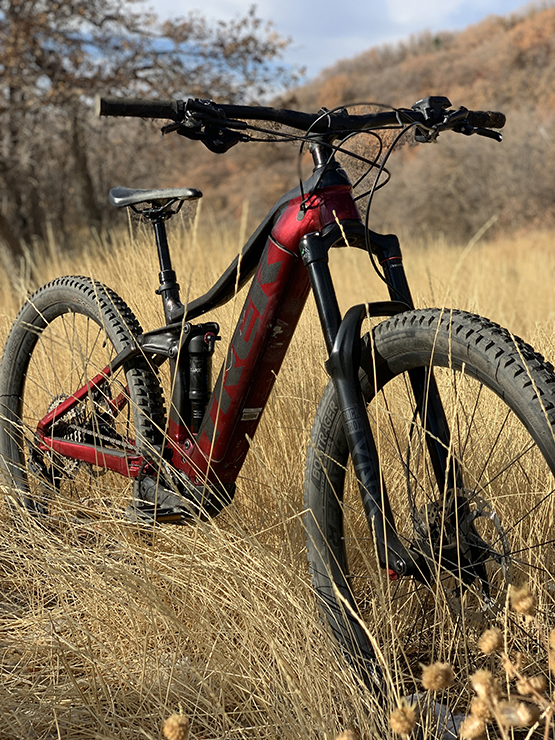
Trek Rail
Just like most e-MTB’s, Rail is for any rider who wants to take on more trails with greater ease. All models come with an 160mm fork and 150mm of rear travel to provide an ample amount of suspension to tackle all types of terrain. Each model also comes with a 12-speed drivetrain and a Bosch Performance Line CX 250W motor. It’s 29er wheels climb efficiently and are spec’d with 2.6 inch tires to provide maximum traction. The Rail was designed after the Slash and the Remedy making it the optimum choice for hard-charging descents, with the power to shuttle you right back up to do it again. It is offered in 9 different build packages starting at $4999 for the aluminum Rail 5.
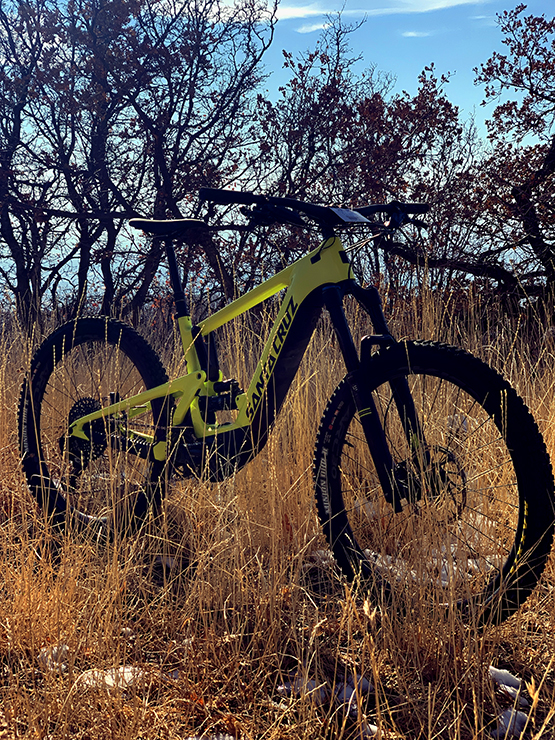
Santa Cruz Heckler
The Hecker is a model that was originally offered as a single-pivot, cheaper alternative to the Bronson. It was offered for 18 years until production ceased in 2016, but this year it came back in the form of an electric mountain bike. The new Heckler is basically an e-bike version of the Bronson, with lower-linked VPP on 150mm of rear travel. It is widely considered one of the most agile and playful e-MTB’s on the market. This came to me as no surprise, compared to a regular mountain bike the Heckler is probably the most natural feeling e-MTB’s I’ve ridden. The frame design is very sleek and hides the motor and battery extremely well. At first glance it even looks like a normal mountain bike. The ride quality is second to none when it comes to downhill. Just like the Bronson it attacks anything you throw at it, and the 27.5” wheels are maneuverable in corners and maintain a nimble feel. This is the only e-MTB we offer that comes with a Shimano Steps E8000 motor which in my opinion is more user-friendly than the equivalent Bosch. A downside is the 504wh battery it comes with, which has less capacity than most e-MTB’s in this class which usually sport 600-650wh batteries. Additionally, this bike is significantly more expensive than other e-MTB’s, starting at a whopping $7399 price point.
Here’s a quick comparison of the three bikes:

Closing thoughts
As mountain biking continues to be a burgeoning sport the prevalence of e-MTB’s will undoubtedly grow. This will force governing bodies for trail use to reconsider policies regarding e-bikes. Albeit there are definitely concerns that should be addressed, such as increased land degradation. Ultimately, electric mountain bikes are good for the sport and industry as a whole; besides being a hell of a lot of fun. They provide access to mountain biking for those who may have an underlying injury preventing them from riding a regular bike, or you can even just use it on a rest day when you don’t feel like pedaling as much. Regardless, you should consider these factors when deciding which e-MTB to purchase:
What kind of riding do I like to do?
Where do I like to ride?
How long and far do I want to ride?
How much do I want to spend?
Electric mountain bikes are very expensive, and most price points will be much higher than those for a regular mountain bike. Keep in mind the amount of gear and accessories you will have to buy in addition to the bike like a helmet, riding shorts, shoes, gloves, and pedals. You will also have to regularly maintain your e-MTB as it will see much more abuse than a hybrid or road style electric bike. I would suggest purchasing your e-MTB from a well respected shop that will be able to effectively address any concerns or maintenance issues that should come up.
- Devin Keefe

